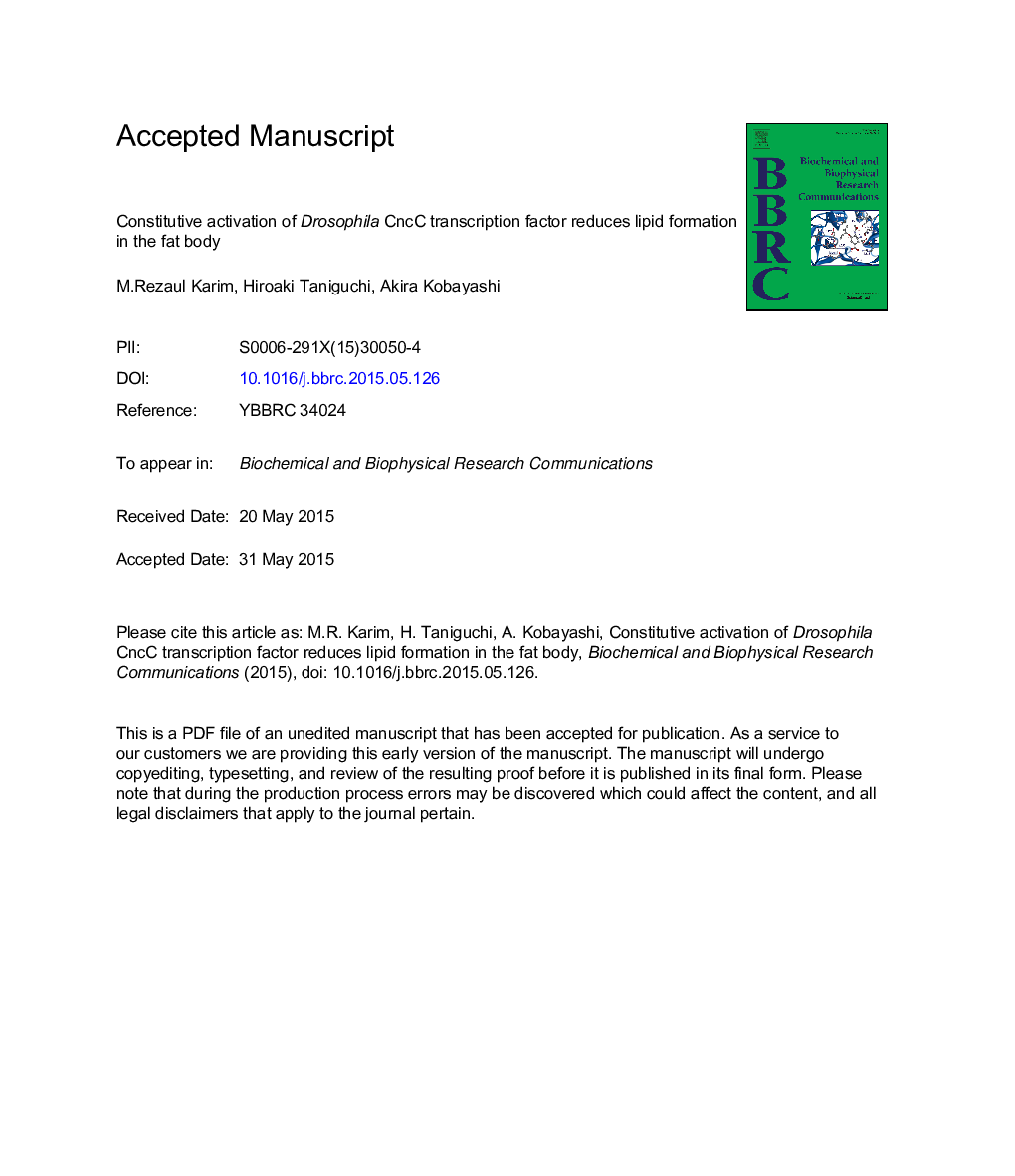| Article ID | Journal | Published Year | Pages | File Type |
|---|---|---|---|---|
| 10750096 | Biochemical and Biophysical Research Communications | 2015 | 25 Pages |
Abstract
Accumulating evidence indicates that the vertebrate stress-response transcription factors Nrf1 and Nrf2 are involved in hepatic lipid metabolism. However, the underlying molecular mechanisms of Nrf1-and Nrf2-mediated lipid metabolism remain unclear. To elucidate the precise roles of Nrfs in this process, we analyzed the physiological role of CncC in lipid metabolism as a Drosophila model for vertebrate Nrf1 and Nrf2. We first examined whether CncC activity is repressed under physiological conditions through a species-conserved NHB1 (N-terminal homology box 1) domain, similar to that observed for Nrf1. Deletion of the NHB1 domain (CncCÎN) led to CncC-mediated rough-eye phenotypes and the induced expression of the CncC target gene gstD1 both in vivo and in vitro. Thus, we decided to explore how CncCÎN overexpression affects the formation of the fat body, which is the major lipid storage organ. Intriguingly, CncCÎN caused a significant reduction in lipid droplet size and triglyceride (TG) levels in the fat body compared to wild type. We found that CncCÎN induced a number of genes related to innate immunity that might have an effect on the regulation of cellular lipid storage. Our study provides new insights into the regulatory mechanism of CncC and its role in lipid homeostasis.
Related Topics
Life Sciences
Biochemistry, Genetics and Molecular Biology
Biochemistry
Authors
M. Rezaul Karim, Hiroaki Taniguchi, Akira Kobayashi,
